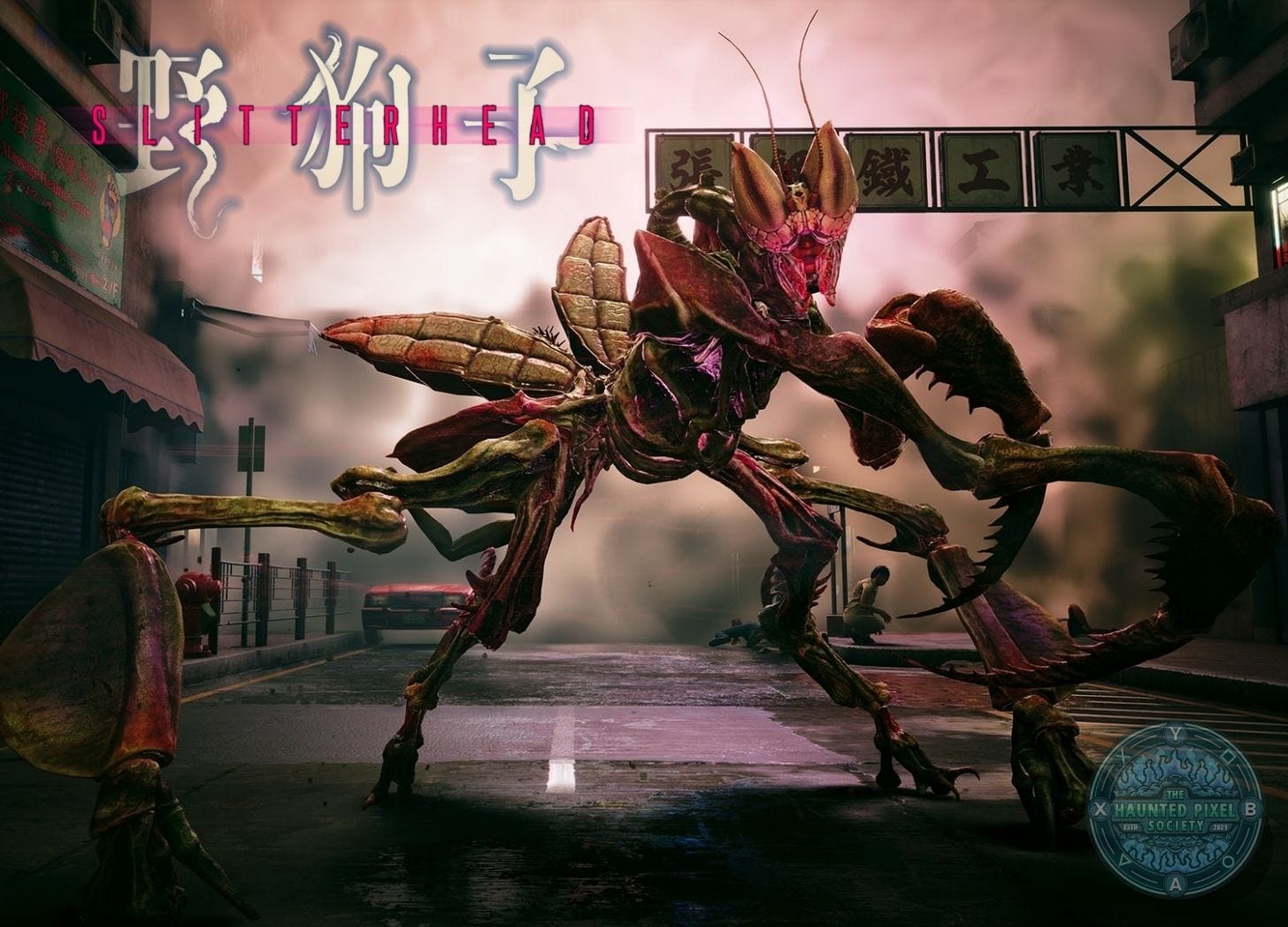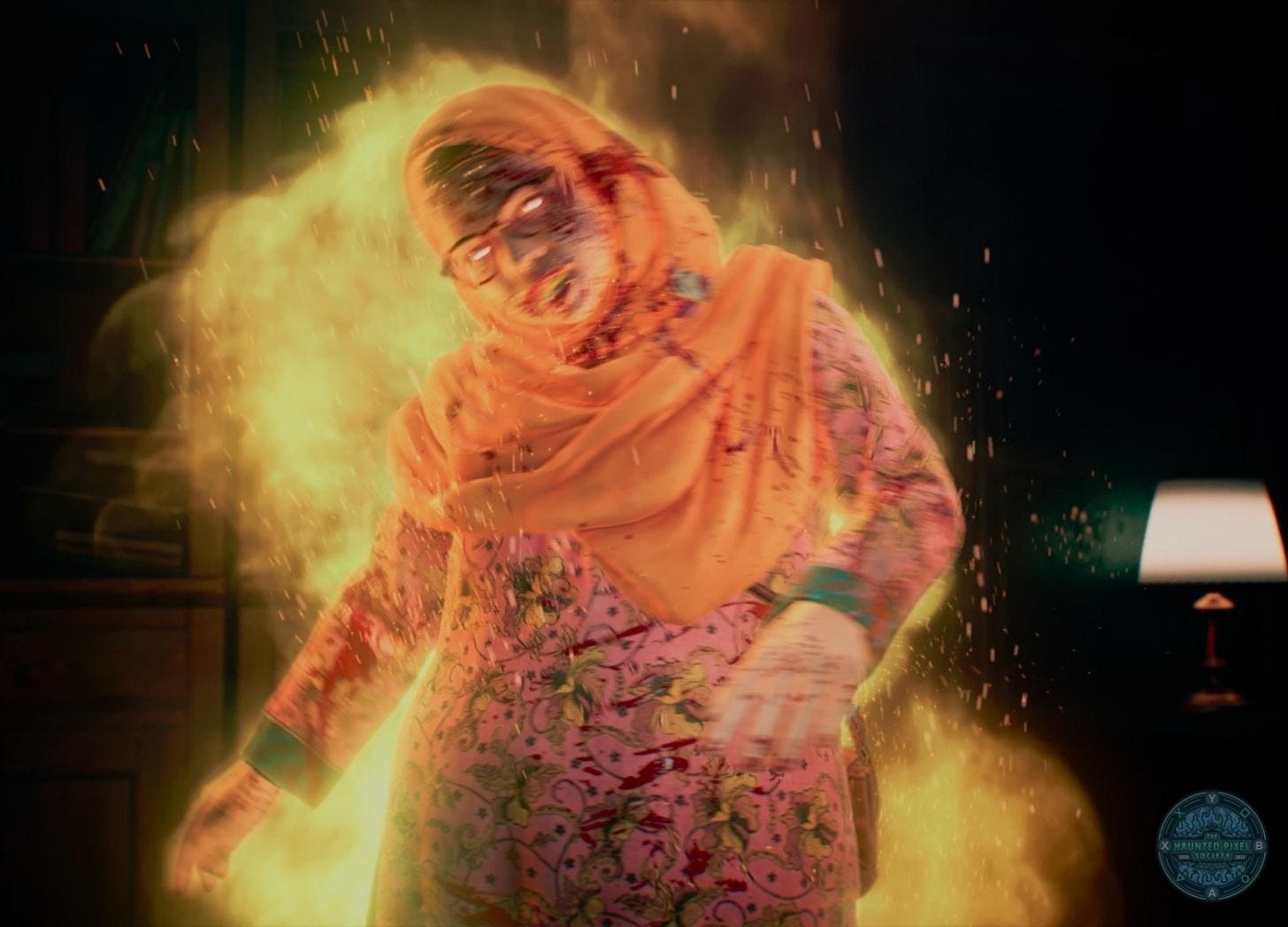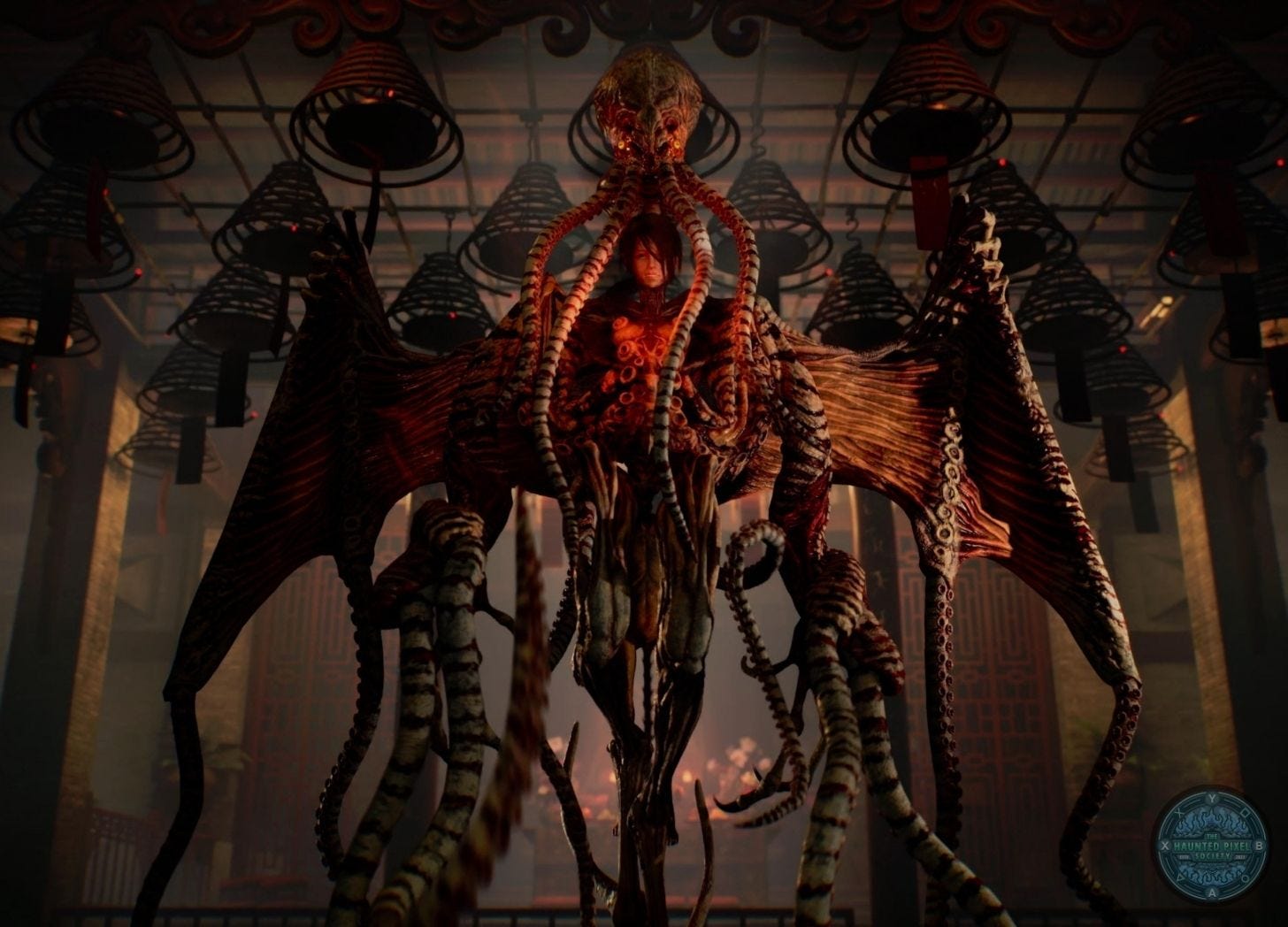What the hell is a Slitterhead?
It’s a fair question, one I’m sure many other players had when Slitterhead was revealed at the 2021 The Game Awards. Umpteen hours and dozens of encounters later, and I still can’t answer with confidence.
Thankfully, it doesn’t ultimately matter. If you’re playing Slitterhead for its disjointed narrative, which really gives Asylum a run for its money, you’re playing for the wrong reasons. It’s a mish-mosh of science fiction themes and horror elements that struggle to come together, leaving me absolutely disinterested in any plot resolution.
And yet, I would absolutely boot it up here and there, at least to revisit some of its late-game content. It’s difficult to pinpoint the janky charm of Slitterhead. So much of it just doesn’t work quite as well as it could, and there were many moments where the game’s technical inconsistencies made things frustrating, but all of that is underscored by these wonderful moments where, when the mechanics work as intended, the genius at DEVELOPER shines through.
You’re One Ugly Motherf*cker
No, I’m not speaking visually. “Ugly” is the best way I can describe the general plot that drives Slitterhead. The longer you play, the more it trips over itself, creating a twisted and sloppy narrative that would have benefited from some heavy editing.
You play as an amnesiac ethereal form with the ability to jump from body to body. On your quest to reclaim your memories (literally, as they’re scattered over Kowloon), you uncover a secret underground of monsters (Slitterheads) and special humans known as Rarities that act similarly to Spider-Man’s symbiotes. That’s about where cohesion ends, and it’s all you ever need to know because unraveling more of this world is only a hindrance.
It’s no surprise that things get weirder and weirder, as Slitterhead was helmed by Silent Hill and Siren creator Keiichirō Toyama. I do appreciate that Slitterhead is so far removed from Toyama’s flagship gift to gaming, foregoing the slow pacing of survival horror in favor of a combat-heavy experience.
A Bloody Brawl Through Kowloon
The core gameplay is where I think Slitterhead has the most to offer. While you start with one Rarity, you’ll amass a small collection before the credits roll, each bringing unique abilities, stats, and fighting styles. As you load into missions, which are tied to specific, segmented parts of Kowloon, you choose up to two Rarities to take along. Unlike many games, where the AI companion is simply there to fill a spot, here, you decide how useful they’ll wind up being.
Engaging the titular monstrosities, which come in a small and repetitive variety of enemy types, requires players to perfect their offensive and defensive game. Rarities can parry and block, but only so long as their primary weapon, made from their blood, has the durability to do so. You can’t sit back and play an overly defensive game, waiting for the right moment to strike. Parrying is key to getting the upper hand, but the timed input can be fiddly, especially when up against multiple enemies, and the game’s worst feature, its disjointed auto-lock, kicks in.
If you find yourself backed into a corner, though, you can possess a nearby Rarity and continue the attack from behind. Combat isn’t just about the Rarities, though. Slitterhead has a rather lively world full of people. People that you can possess and essentially use as fodder. Much weaker than Rarities, civilians can serve as a distraction or as a way to overwhelm the Slitterhead with certain abilities. Being able to possess nearby civilians gives the combat a unique depth. They’re tools in more difficult fights, there to give you an edge if you know how to use them. It may sound silly, but I don’t think the game would be as much fun if you couldn’t bounce between hapless passersby. They can even be used for traversal, but those are typically more scripted moments than anything else.
Possessing other characters isn’t just about getting out of a bind. When you choose your Rarities for a mission, you want to consider strengths and weaknesses, as one’s abilities may bolster another’s physical prowess. Every character has a somewhat unique skill tree, where you spend points acquired by completing missions to unlock new skills, improve stats, or upgrade weapons. Though most of every character’s skill tree will be unlocked by the end of the game, you still want to make sure you have a balance to get through the more difficult encounters.
In the early game, you’re just improving your initial Rarities, giving them skills like the ability to recover when knocked down or improve the health of nearby civilians. In the later game, you need to build characters that play off one another. It’s surprisingly deep, and you will feel it if you enter a fight with two Rarities that don’t support one another. If you have one who uses a lot of blood to chip away at a Slitterhead’s health, you’ll want a counter that increases how much is dropped when civilians and enemies take damage.
I experimented frequently, returning to previous missions just to see how important it was to match strong Rarities with a support. In the latter game, poor compatibility almost guarantees a defeat. The game does a disservice to itself by being rather easy for a good portion of the beginning and not allowing the true depth of Rarities to shine. Once the difficulty level kicks up a notch or two, the challenge requires more meticulous thinking, both when spending ability points and in combat.
We’ve Been Here Before
Though I would have no problems returning to the world of Slitterhead, I understand why many wouldn’t want to. Even those who enjoyed their first playthrough. Much of the game is repetitive in that you revisit the same environments and even the same missions multiple times. It’s all built into its messy narrative in ways I can’t quite get into without touching on spoilers, but that doesn’t make it any less disappointing to find yourself doing the same things over and over, just for a minor advancement in the weakest part of the game. I scolded Kojima for it in The Phantom Pain, and here, it’s even less forgivable.
Of all its problems, from an inconsistent lock-on system to a disjointed narrative, it’s the repetition that really holds Slitterhead back. Otherwise, its faults are charming, and too much polish could chip away at the game’s identity.
I think back to old PS2/Xbox survival horror games like Obscure and The Suffering, which were far from perfect. Still, they garnered a cult following that accepted their shortcomings and could see just beyond the jankiness to find strokes of genius. There is genius in Slitterhead, it’s just buried beneath a few layers of muck that would be easier to overlook if the game didn’t keep presenting them with a story that requires repetition.




